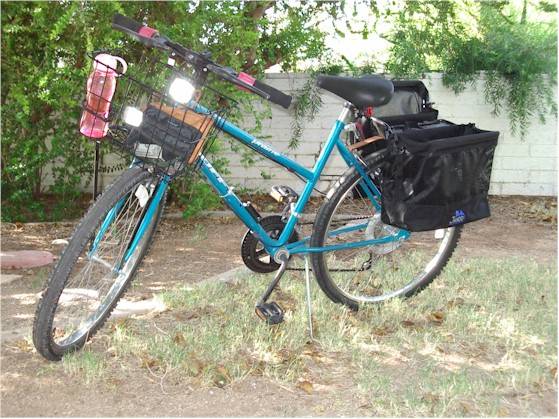 Living in Central Illinois has its disadvantages for winter cycling. Beyond the cold, it is typically wet, with rain, sleet, ice, snow, and a mixture of them all, sometimes all in the same day. Add dirt, mud and the copious amounts of salt, cinders and sand that often get dumped on streets, it can make your proud ride a complete mess.
Living in Central Illinois has its disadvantages for winter cycling. Beyond the cold, it is typically wet, with rain, sleet, ice, snow, and a mixture of them all, sometimes all in the same day. Add dirt, mud and the copious amounts of salt, cinders and sand that often get dumped on streets, it can make your proud ride a complete mess.
Stop riding? Nope. Enter the lowly but noble winter beater, a bike that is mechanically and structurally sound, but might be a bit fugly. Slap some fenders on the bike and you are in business.
Some of the best bicycles for winter cycling are decent aging mountain bikes with a rigid fork and decent, but not exceptional, wheels. Older-style Schwinn, Fuji, Nishiki, etc., bikes are nice options, but even a Huffy or other department store bike can be useable in the winter.
Conventional wisdom says to go with an aluminum bike, since they don’t rust. This is true, but salt and water make aluminum corrode, so make sure that you regularly clean your winter beater to prevent a failure of the metals. Salt and water can destroy pretty much any bike metal so the frame material will not matter much. If you have galvanized spokes or nipples on your wheels, you might want to regularly lube them with a bit of grease though, as those tend to be the first things that rust. A bit of grease on the nuts and bolts of your bike, especially the brakes, can prevent rust as well.
Keep your chain of your winter commuter lubed with a lube that is a bit thicker than what you normally use so it stays on, but keep in mind, you will have to clean it frequently to avoid too much grit destroying the drive train. If it is particularly wet or the salt trucks are out, you may need to do this. Speaking of chains, don’t use a new one here, a used but not worn out chain is a perfect for the job. If you feel the need to buy a chain, get one for your regular ride, and use the used one for the beater. The chain will probably be toast in spring no matter if it started out new or not.
Don’t forget to add lights. Days are shorter in winter and Illinois state law says a rear reflector and front light are required. I suggest adding a rear light along with the front at the minimum. A vest such like road construction workers use can also go a long way in helping cars see you. Even though your bike may be an eyesore, you still will need a lock. Cold and easy transportation usually equals a missing bike, no matter what condition.
The greatest thing about a beater bike is that it need not be a long-term commitment. Your beater bike probably can be cleaned up in the spring and sold on Craigslist to someone looking for point A to B transportation.








